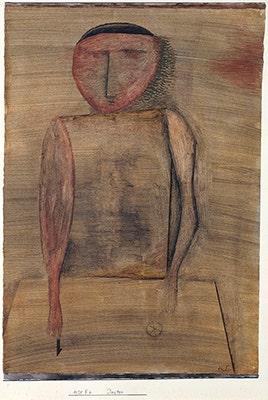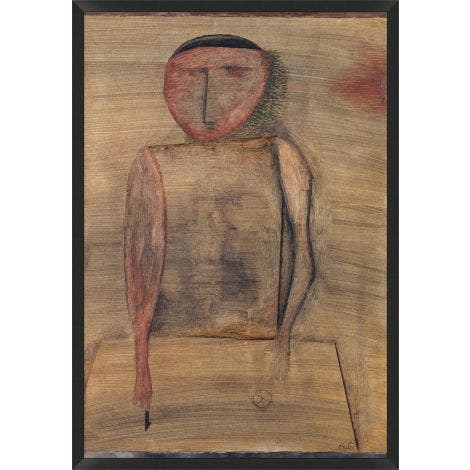Local Storage seems to be disabled in your browser.
For the best experience on our site, be sure to turn on Local Storage in your browser.
Doctor

Our Inspiration: Doctor
Paul Klee (German, b. Switzerland, 1879–1940)
Watercolor, gouache, and oil wash on paper, bordered with gouache and ink, mounted on cardboard; 25 1/2 x 18 7/8 in.; 1930
The Berggruen Klee Collection, 1984 1984.315.52
In 1920, Walter Gropius invited Paul Klee to join the faculty of the Bauhaus. A school of architecture and industrial design operating first in Weimar (1919–25) and then Dessau (1925–32), it also included the study of arts and crafts. Nearly half of Klee’s some 10,000 works (mainly small-scale watercolors and drawings on paper) were produced during the 10 years he taught at the Bauhaus, and they vary widely. Some relate to the subject of his courses, to his preoccupation with the relationship of colors.

Our Inspiration: Doctor
Paul Klee (German, b. Switzerland, 1879–1940)
Watercolor, gouache, and oil wash on paper, bordered with gouache and ink, mounted on cardboard; 25 1/2 x 18 7/8 in.; 1930
The Berggruen Klee Collection, 1984 1984.315.52
In 1920, Walter Gropius invited Paul Klee to join the faculty of the Bauhaus. A school of architecture and industrial design operating first in Weimar (1919–25) and then Dessau (1925–32), it also included the study of arts and crafts. Nearly half of Klee’s some 10,000 works (mainly small-scale watercolors and drawings on paper) were produced during the 10 years he taught at the Bauhaus, and they vary widely. Some relate to the subject of his courses, to his preoccupation with the relationship of colors.



